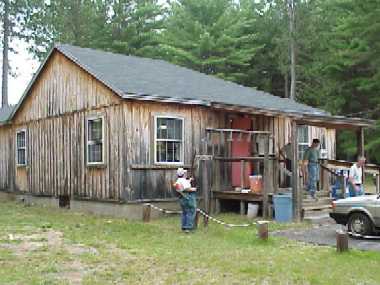
1. Classes were held at the Pioneer Sportsman's Club in Dunbarton, NH. Lectures were presented in the clubhouse classroom, and man-on-man handgun retention and disarming drills were practiced on the indoor range and the grounds around the clubhouse (right).
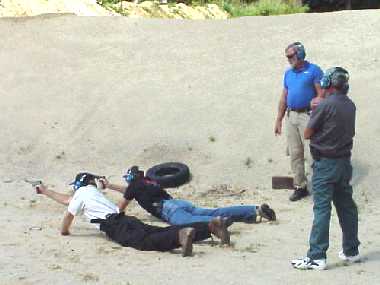
2. In addition to reviewing basic shooting stances, we spent a good deal of time shooting from the unnatural positions one might find oneself in if actually engaged in a gunfight, especially if wounded. Many of these were pretty uncomfortable (left).
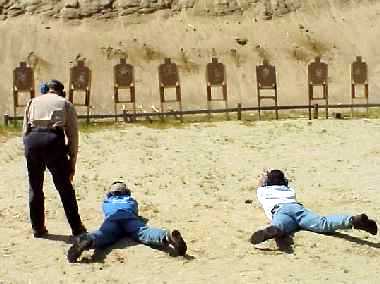
3. Most of our shooting was done between seven and fifteen yards. Here the drill was a two-hand grip, arcing the back to provide elevation (left).
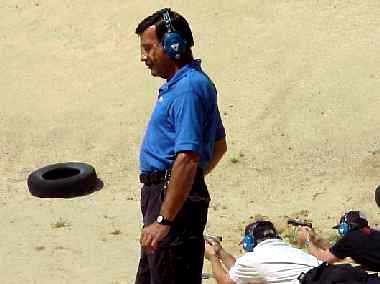
4. Despite the extensive use of highly qualified assistant instructors, Mas Ayoob was involved in all aspects of the training. Here he is assessing the prone position of one of the students (right).
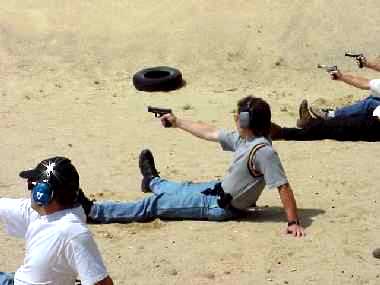
5. How do you shoot if you have tripped or been knocked down? We shot one handed with the weak hand supporting the back, as well as two handed with knees bent (left).
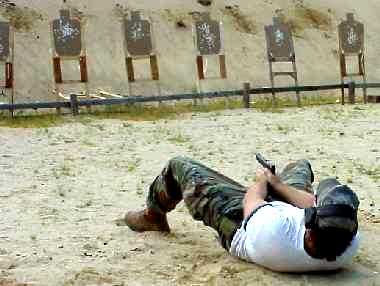
6. Flat on the back with a two-handed grip actually proved to be a very stable firing platform (left).
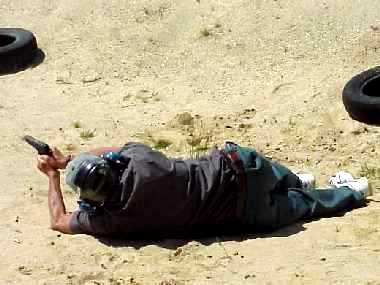
7. A former Marine shows us how it is done. All of these drills were designed to build survivability by giving one the skill and confidence to carry on the fight under extremely adverse conditions (right).
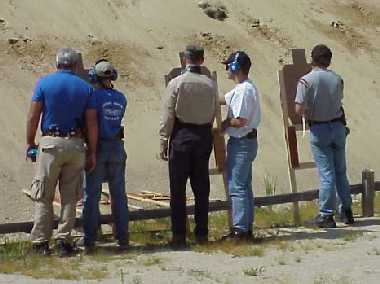
8. Examining and taping targets. There were some very good shooters in the class, but almost all were able to improve performance (left).
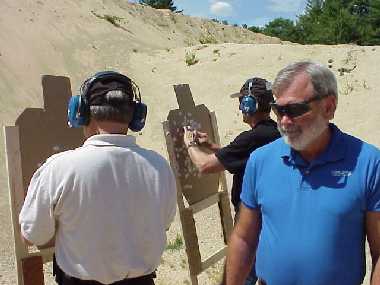
9. Assistant instructor Dennis Luosey checks out our progress (left).
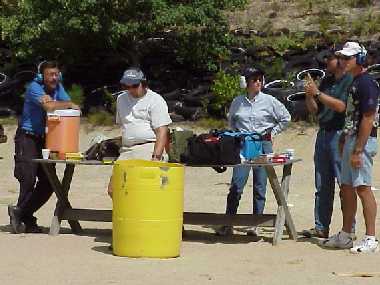
10. Drills were shot in two relays. Here the off relay gathered near the water cooler to discuss technique. We were blessed with warm sunny weather throughout the week, so the water cooler saw regular use (right).
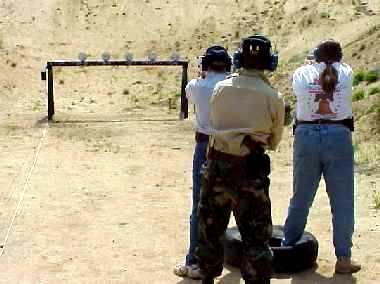
11. Falling plates. These were used for a number of competitive drills. We did relay against relay, in which the two shooters worked together - one from the right and the other from the left - to drop the plates in the shortest possible time. We also shot man-against-man, in which the winner dropped his or her three plates first. If you were fast enough, you could then go to work on the other guy's remaining plates (left).
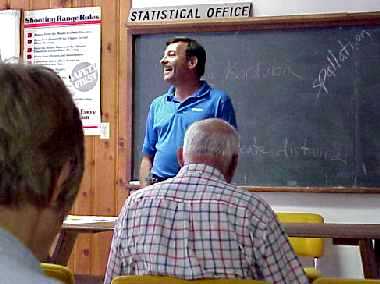
12. Mas provided several excellent lectures, and followed up each video with an update and Q&A session (right).
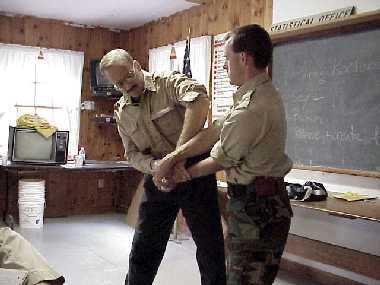
13. Assistant instructors Greg Korduba and Jim Carr review for us the various weapon retention and disarming techniques covered (left).
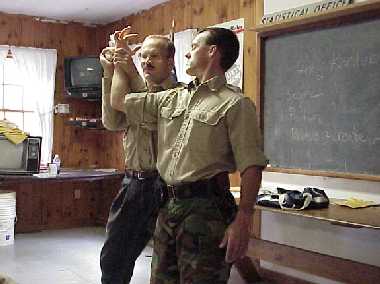
14. The "nutcracker" (left).
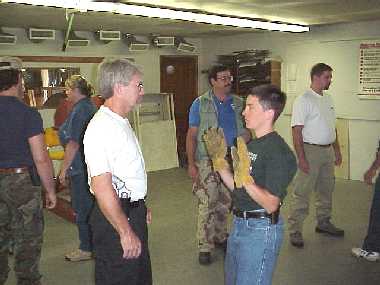
15. Action beats reaction. What do you do if someone this close starts to draw a gun on you? (right)
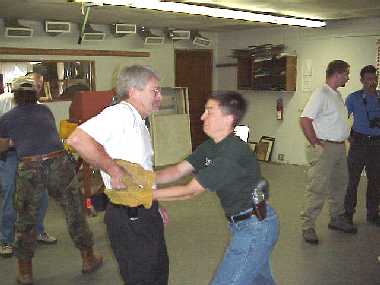
16. Smother the draw and then take their gun away from them. There is little if any chance that you can draw faster, especially from concealment. Better to control their weapon at this point (right).
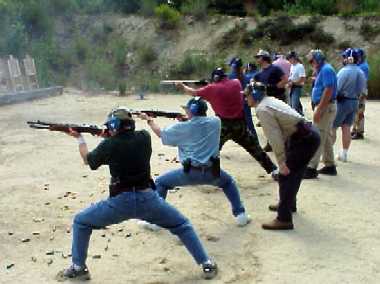
17. Shotguns at fifteen yards. We learned a number of low-recoil shotgun techniques, including how to brace a shotgun against a ballistic vest (left).
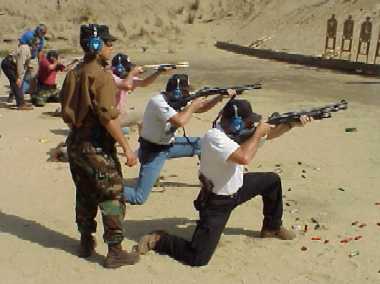
18. A more conventional shotgun stance. We shot 90 shotgun slugs over the week, as well as ten rounds of buckshot to pattern our shotguns. Shotguns on the line included Mossbergs, Remingtons, Benellis, etc. (left).
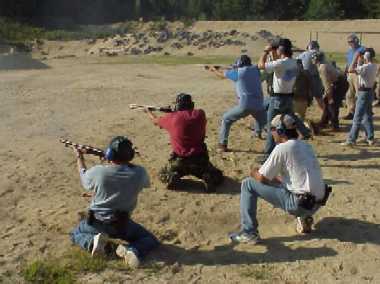
19. Shotguns at fifty yards. At this range, the longer sight radius of the shotgun provided a distinct advantage over the short radius handguns (right).
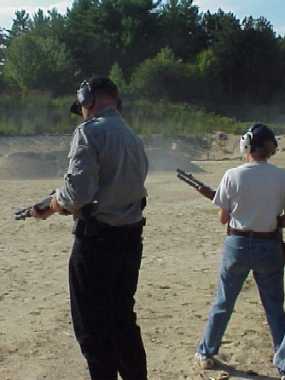
20. My turn. I'm on the left, using a parkerized Mossberg 590 with ghost ring sights (right).
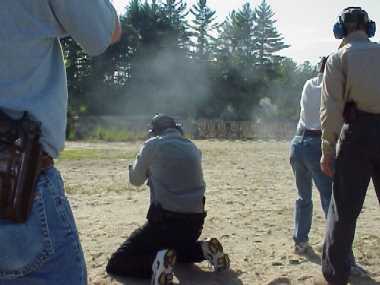
21. From a kneeling position, shooting left handed instead of my normal right hand stance, I centered a five shot group small enough that I was able to insert the fingers of one hand through the individual holes. I like those ghost right sights (right).
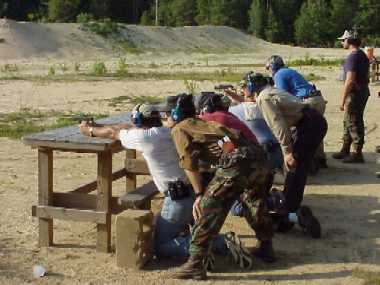
22. Handguns at 100, yes 100, yards. After my spotter let me know I was shooting high on my first two shots, I dropped the next four into the torso of an IPSC target using a Glock 23 equipped with tactical night sights, demonstrating that handguns are plenty accurate for the job. The trick is good sight picture and smooth trigger press (left).
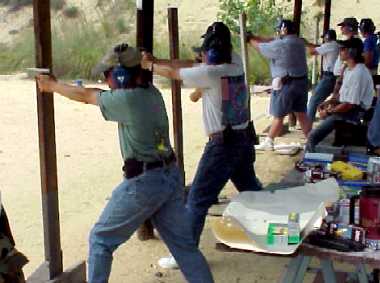
23. Barricade shooting at twenty five yards. This was one of our exercises in the use of cover. We also saw a very informative video that opened our eyes as to what constitutes effective cover. In this drill, the vertical posts were used to represent cover so we could practice shooting around a barricade (right).
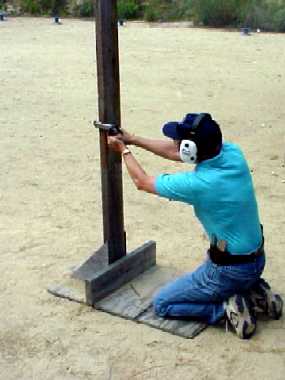
24. One of several women taking the course. Nancy was pretty sharp with that .45, although the gun seemed a bit finicky about ammunition - demonstrating again that one must practice with the ammo you plan to use to ensure its reliability in your weapon (right).
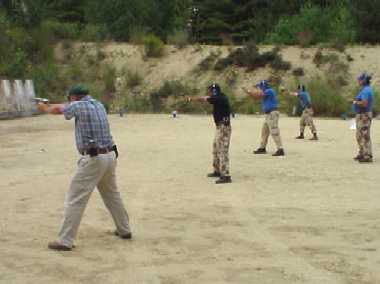
25. Before the LFI-II double speed qualification shoot on the last day, Mas and several of the staff shot a pace-setter (left).
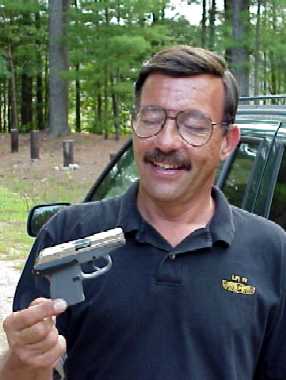
26. Mas Ayoob with a Kel-Tec P32. Mas is a big fan of the 9mm P11, but had not previously examined the P32. His response? "Wow! That's cute! I'll have to have George [Kelgren] send me one!" (right).
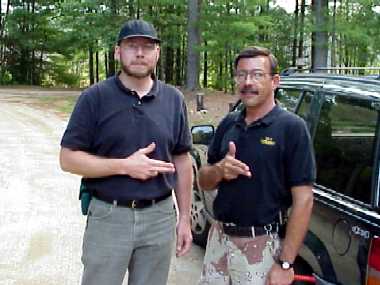
27. Me and Mas, and the mysterious(?) LFI hand signal (left).
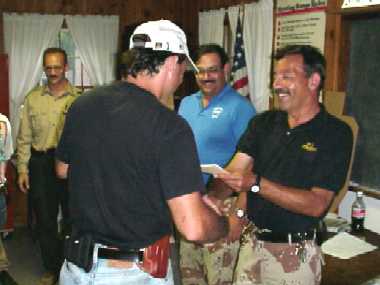
28. A certificate of training and a round of applause for each of the graduates. Congratulations, Dale (right).
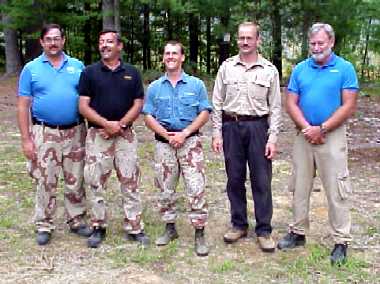
29. Our instructional staff. From left to right: Rick Devoid, Massad Ayoob, Jim Carr, Greg Korduba, and Dennis Luosey (left).
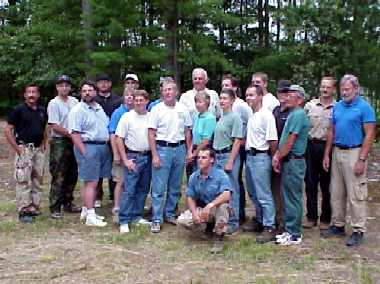
30. There were sixteen students in our class including an electronics technician, a patient account representative, a retired Air Force officer and commercial pilot, an electrical engineer, a university professor, a business owner, a manufacturing line worker, a retired manufacturing equipment mechanic, a software product marketing manager . . . Although our backgrounds and professions varied, we shared the common belief in personal responsibility for the defense of self and loved ones.